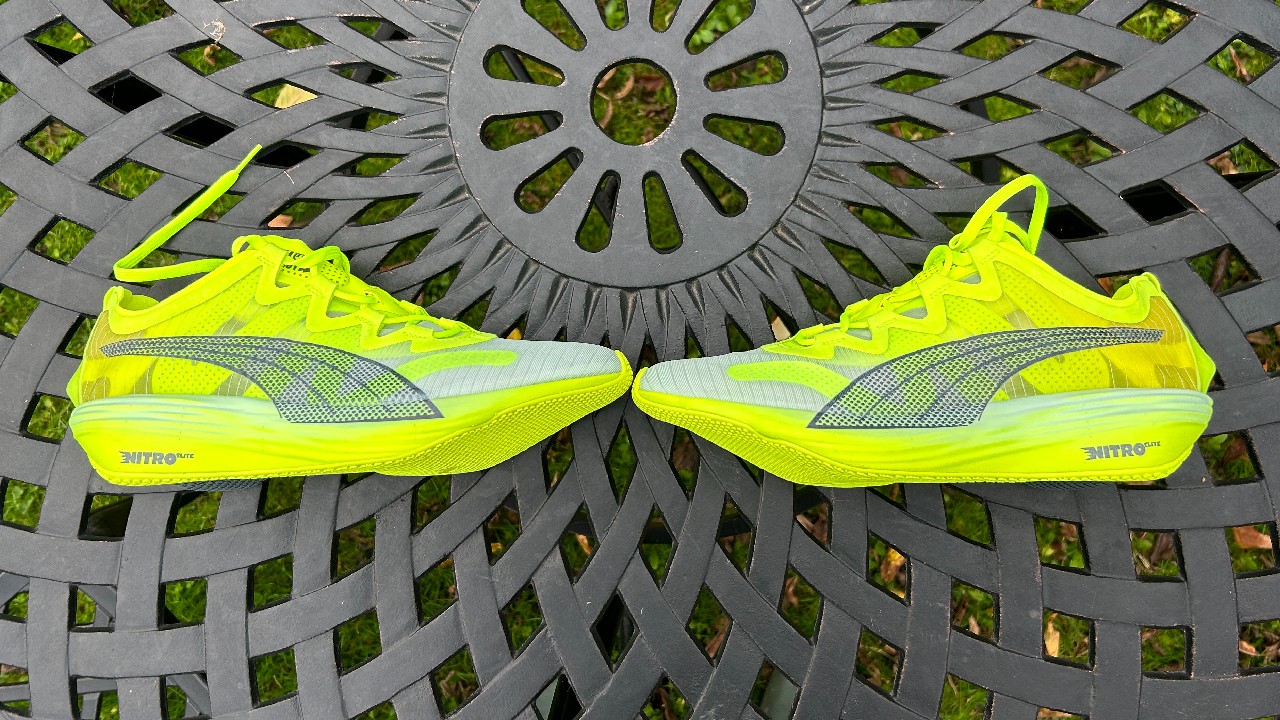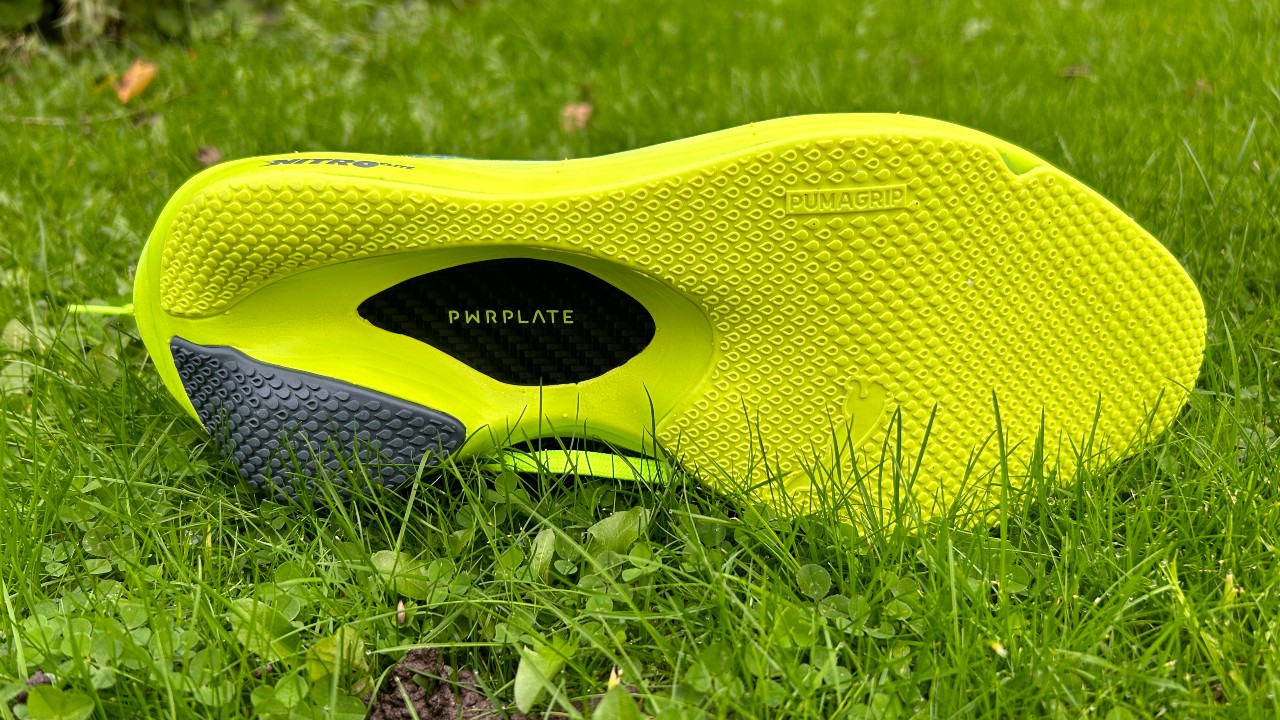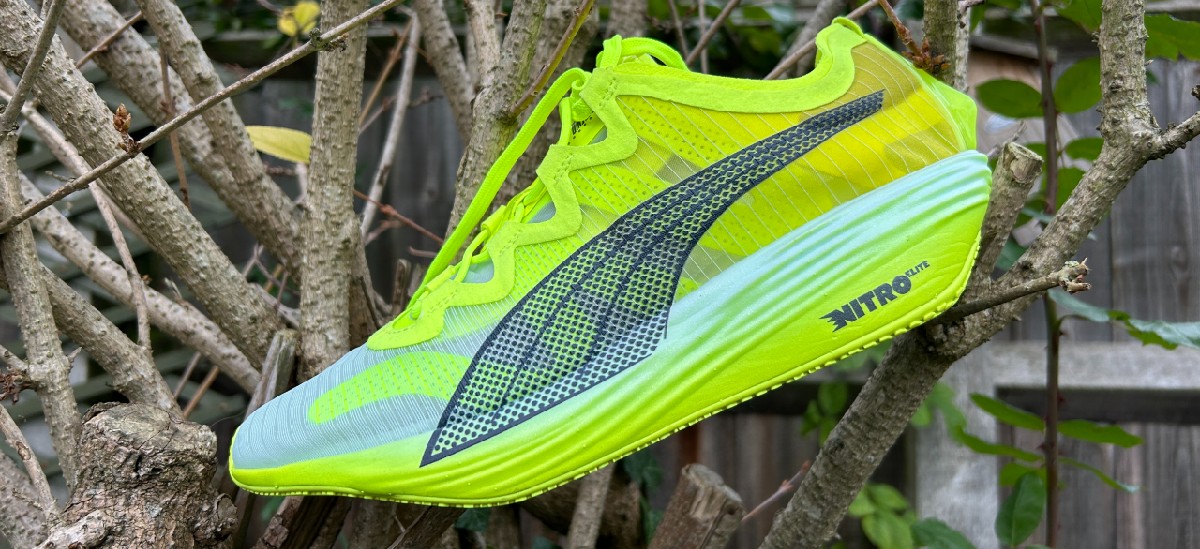Our Verdict
The Puma Fast-FWD Nitro Elite is built for short-distance speed, and delivers as a great 5K/10K racing option and track workout shoe. However, its limitations make it a niche pick compared with other shoes on the market, which will limit its appeal – especially since other carbon racers are more versatile.
For
- Very light
- Speedy ride
- Great grip
Against
- Expensive for limited purpose
- Not suitable for longer races
You can trust Coach
Puma might have arrived later than other brands to the carbon super-shoe game, but the brand is making up for lost time now – the Fast-FWD Nitro Elite is the third carbon racer in its line-up, alongside the Deviate Nitro 2 and Fast-R Nitro Elite.
Of the trio, the Fast-FWD is the 5K/10K racing option, with a lightweight build and funky geometry that forces you onto your midfoot for an efficient ride. It’s undoubtedly fast and a lot of fun to run in, but less versatile than the best carbon plate running shoes. Most runners will get more value from shoes like the Nike Vaporfly NEXT% 2, which is great for events of any distance.
Puma Fast-FWD Nitro Elite Review: Price And Availability

The Fast-FWD Nitro Elite launched in February 2023 and costs $220 in the US and £200 in the UK. It will be available to buy from 15th February. The Fast-R costs $250/£220, while the Deviate Nitro Elite 2 is $200/£175.
Design And Fit
The Fast-FWD stands out thanks to its distinctive geometry, which has cut-outs under the heel and forefoot to create an exaggerated rocker that only allows you to land on your midfoot before shifting you onto your toes.
The midsole is made from Puma’s PEBAX-based Nitro Elite foam. There is also a PEBAX-based insole to create a softer feel underfoot. Puma’s PWRPLATE carbon plate runs through the midsole to provide even more punch. The shoe has a 36mm stack height at the heel, and it’s 27mm at the forefoot for a 9mm drop.
The upper is a lightweight monomesh with some strips of PWRTAPE adding structure in key areas to help lock the foot down and increase durability. On the back of the shoe is a plastic fin, which adds some structure to the heel while also looking fierce.
Surprisingly for such a light shoe (the Fast-FWD weighs 7.4oz/209g in my UK size 9) there is a full rubber outsole – on the foam that is there, at least. Along with the heel cut-out and forefoot rocker, there is also a big midfoot cut-out that shows off the plate. The shoe does still grip very well, however, with the PUMAGRIP LT rubber providing good traction at your toe-off and when rounding corners at speed in short races.
Sign up for workout ideas, training advice, reviews of the latest gear and more.

How I Tested This Shoe
I have raced a 10K in the Puma Fast-FWD Nitro Elite as well as doing an all-out 5K parkrun and a track session running 800m and 400m reps. I have also reviewed the Puma Deviate Nitro Elite and Puma Fast-R Nitro Elite carbon shoes, along with most of the best carbon plate running shoes available, and I have just started testing the Deviate Nitro Elite 2.
Running Performance
Puma describes the Fast-FWD as a track spike for the road, and it creates a similar level of nervous excitement when you pull it on. It feels almost dangerous – you’d better be ready to run fast, or this is not going to work.
I had some extra fear of the shoe, because I am a heelstriker and there’s not a lot of heel here. I’d be terrified as a forefoot striker, mind, because there’s even less foam there.
The Fast-FWD does force you into that midfoot landing zone, but it actually doesn’t feel too strange to run in it when you’re going fast. The rock forwards onto your toes is speedy, but not noticeably more aggressive than other carbon races, and when pushing the pace the geometry suited me well even as a heelstriker.
I did the Runthrough Chase The Moon 10K in Battersea Park for my first race in the shoe and ran 33min 53sec, a time I was surprised by and happy with, having started with no expectations a few weeks after running the Valencia Marathon. The ride felt smooth throughout the race and, as I tired, it did feel like the Fast-FWD was pushing me onto my midfoot and toes to keep ticking over without my pace dropping too much.
While I did go off a little fast that day, my pace was fairly controlled, which I think is important in the shoe, because when I did a parkrun in it and went out way too hard it did start to feel awkward and work against me in the last couple of kilometres. When I was running well and in control, the shoe felt good, but when I dropped off significantly the geometry didn’t really work so well.
This might be down to my shuffling, heelstriking gait, which means that to get the best from the Fast-FWD I need to change my stride a little. Over time this can tire muscles I don’t use in the same way when running in a shoe with more of a heel. That’s speculative, but the shoe might work better for natural midfoot strikers.
It was terrific fun to use for a track session running shorter reps, though. In fact I’d say it’s one of the best shoes for track sessions, since it’s lightweight and very fast while providing more protection than low-stack shoes or spikes so your legs aren’t so sore the next day. The Fast-FWD has too high a stack to be legal for track events, though, so it’s one to enjoy in training only.
Puma says the Fast-FWD is for shorter events only and while some lightweight runners might fancy it for a half marathon, I did find my feet were getting pretty beaten up by the end of the 10K, so I wouldn’t take it much past that distance myself.
Is The Puma Fast-FWD Nitro Elite Worth It?

The Fast-FWD is a shoe built for a specific purpose, and it does its job well. It’s a great option for short-distance races and speed sessions, with a unique design and a tremendously fun ride.
However, I have two big concerns with it. One is that it’s niche – most carbon shoes can handle a greater variety of races well – which makes it a harder sell for $250/£200. The bigger concern, though, is whether it’s actually a better short-distance racer than other shoes that are not only more versatile, but also cheaper.
The obvious rival is the Nike Vaporfly NEXT% 2, which is often in sales for well under $200/£200 and a brilliant short-distance racer while also being great for long events. I ran both my 5K and marathon PB in the Vaporfly, and would pick it ahead of the Fast-FWD for my next 5K if the chips were down.
Puma’s own Deviate Nitro Elite 2 is also an option to consider. It’s a bit heavier than the Fast-FWD but still very light and much cheaper. I’ve not used the Deviate Elite 2 much yet, but the original was a great short-distance racer with a more normal ride than the Fast-FWD that also works better for longer runs and races.
Compared with other short-distance racers like the Adidas Takumi Sen 8, the Nike Streakfly and New Balance FuelCell SC Pacer, I’d probably rate the Fast-FWD just behind the Adidas, which is one of my favourite racing shoes. The Takumi Sen 8 is a little lighter and also more comfortable and versatile for longer races, but just as snappy for the short stuff.
However, none of these short-distance racing shoes have been able to really convince me they are necessary when higher-stack carbon shoes still feel just as good over 5K and 10K. I loved running fast in the Fast-FWD, and it’s an undeniably interesting new addition to the carbon shoe market, but I suspect most runners will find better value elsewhere.

Nick Harris-Fry is a journalist who has been covering health and fitness since 2015. Nick is an avid runner, covering 70-110km a week, which gives him ample opportunity to test a wide range of running shoes and running gear. He is also the chief tester for fitness trackers and running watches, treadmills and exercise bikes, and workout headphones.

